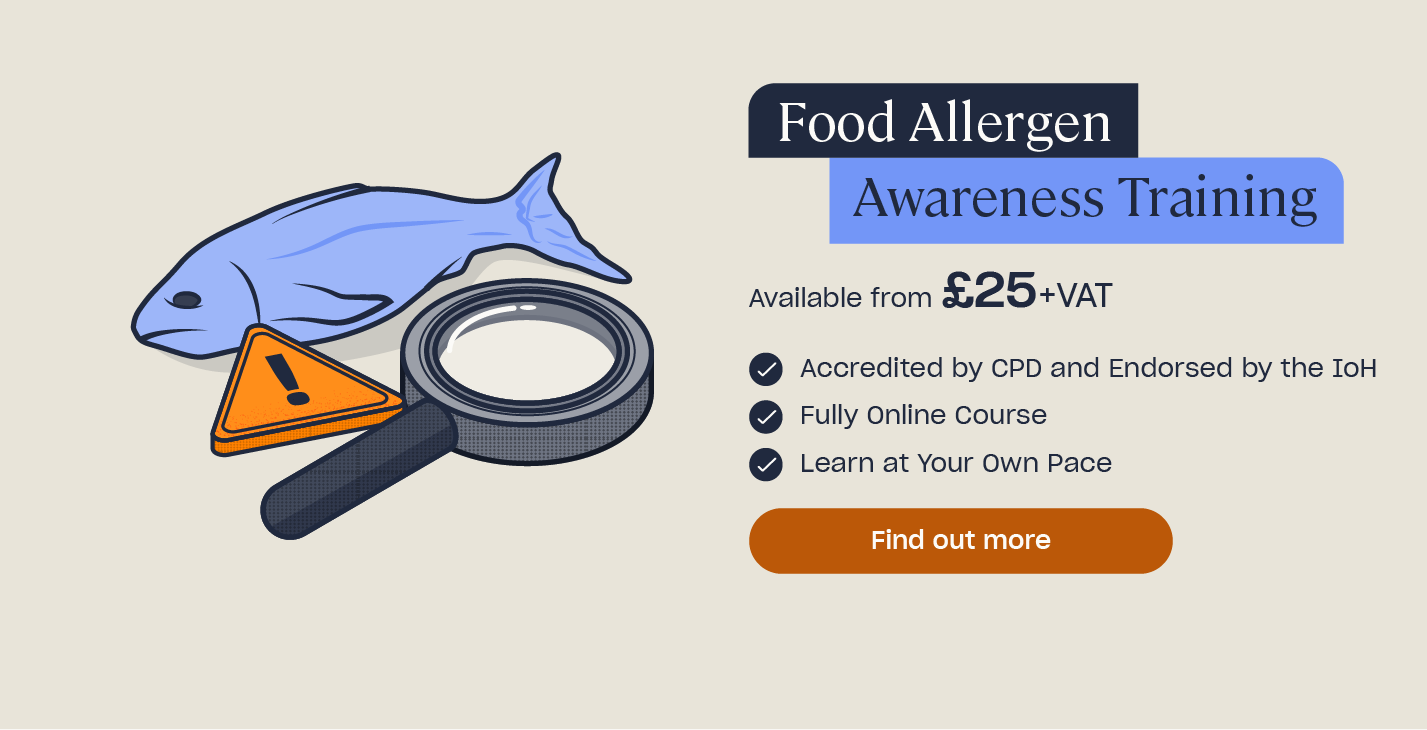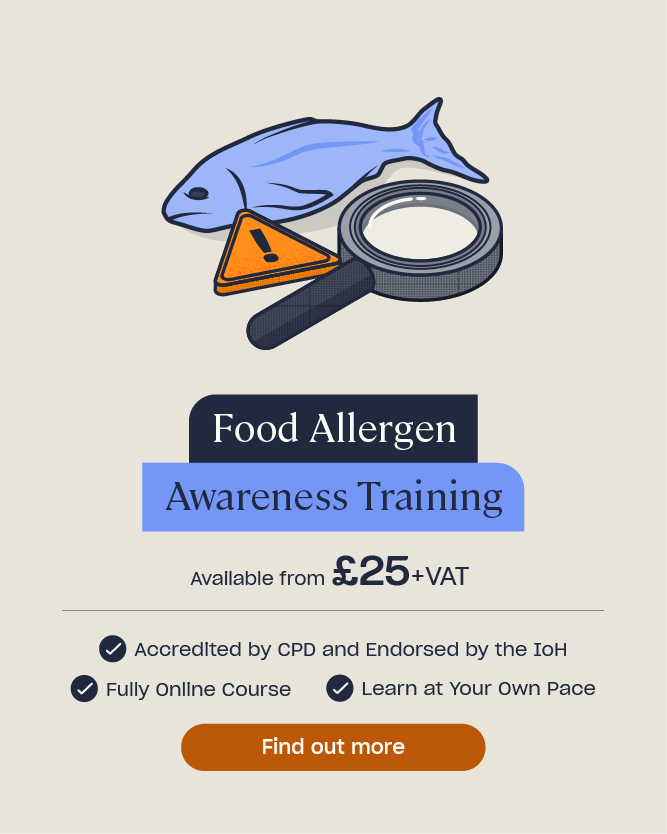What is Food Hypersensitivity?
Food hypersensitivity is a blanket term used to describe an adverse reaction to food. This could be a result of a food allergy, a food intolerance, or an autoimmune disease such as coeliac disease.
As food hypersensitivity affects so many people in the UK, it’s important that we understand the different terms related to food allergies and intolerances. In this article, we aim to define what this refers to, and provide examples of food hypersensitivity, including information on food allergies, food intolerances and coeliac disease.
What Does Food Hypersensitivity Mean?
If someone experiences unpleasant symptoms after consuming food, they may have food hypersensitivity and this can appear to varying degrees of severity. A food intolerance, for example, may cause adverse symptoms, but a food allergy can potentially be life-threatening.
There’s no singular cause for someone developing food hypersensitivity. Food allergies happen when the body’s immune system treats proteins found in food as a threat by mistake, and therefore releases a number of chemicals. This is the cause of the symptoms that an allergic reaction creates. Some people are born with a food allergy, whereas in the others, they develop later in life. Similarly, coeliac disease can occur at any stage of life – although it is most common between the ages of 8-12 months in children, and between 40-60 years old in adults. Food intolerances can develop at any age.

It’s thought that an estimated two million people in the UK are suffering from a diagnosed food allergy and a further 600,000 with coeliac disease. The symptoms of food intolerance vary greatly and are often similar to other common conditions. As such, it’s easy to misdiagnose and this makes it virtually impossible to define exactly how many people in the UK are affected, but it is a common issue that is thought to be on the rise.
Food Hypersensitivity Examples
In this section, we’ll look into three examples of food hypersensitivities in more detail – food allergies, food intolerances and coeliac disease.
Food Allergies
A food allergy is an immune system reaction by the body against a specific ingredient that the person has consumed, causing an allergic reaction.
An allergic reaction can be triggered by eating even just a trace of the ingredient or food. The most common symptoms are an itchy mouth and throat, a red rash and swelling of the face. These are likely to occur rapidly after eating the allergenic food. In serious cases, however, contact with a food allergen can cause a severe, life-threatening allergic reaction, known as anaphylaxis.
Other reactions include:
- Flushing of the skin.
- Hives (nettle rash).
- Difficulty in swallowing or speaking.
- Severe asthma.
- Alterations in heart rate.
- Abdominal pain, nausea or vomiting.
- Sudden weakness due to a drop in blood pressure.
- Collapse and unconsciousness (anaphylactic shock).
Some people find their food allergy is easy to manage as their reactions are mild and can be kept under control by making careful food choices. For others, however, their food allergy can be life-threatening, and they need to seriously consider what they are eating on a daily basis.

Any food has the ability to cause an allergic reaction, however, allergies to certain foods are more common than others.
There are 14 named allergens that legally must be declared if they are used as an ingredient in a food product.
These are:
- Celery.
- Cereals containing gluten.
- Crustaceans.
- Eggs.
- Fish.
- Lupin.
- Molluscs.
- Milk.
- Mustard.
- Nuts.
- Peanuts.
- Sesame.
- Soya.
- Sulphur dioxide and sulphites.
To help you remember the 14 named allergens, we have a free downloadable poster for you to use or display in your workplace. You can find it here.
Need a Course?
Our Food Allergen Awareness Training and Anaphylaxis Awareness courses are designed to ensure learners have a thorough understanding of allergens and help food handlers identify and label allergens correctly in order to comply with allergen laws and keep customers safe. If you work in the manufacturing industry, our Food Allergens in Manufacturing course will be more suited to your food business.
Food Intolerances
A food intolerance is defined as having difficulty digesting certain foods, resulting in an adverse physical reaction to them if they are eaten. While this reaction can be unpleasant, a food intolerance is not life threatening but should nonetheless be taken seriously.
People who suffer from food intolerances often don’t create enough of a particular enzyme that the digestive system requires in order to successfully break down certain foods. This is what causes the unpleasant symptoms that occur from consuming the offending food.
Any kind of food can cause intolerance. However, there are certain foods that more commonly cause food intolerances than others, such as lactose, gluten and certain additives or chemicals.

Common symptoms of a food intolerance include, but are not limited to:
- Bloating.
- Rashes.
- Headaches.
- Nausea.
- Fatigue.
- Flushing of the skin.
- Stomach pain.
These symptoms typically present themselves over a short period of time – for example, a few hours after eating the food – but often only arise if large amounts of the offending food is consumed.
While both conditions should be treated seriously, it’s crucial to remember that a food intolerance is not the same as a food allergy, which can be life threatening and triggered by trace amounts of the allergen.
For more information, check out our article: “What is a Food Intolerance?“
Coeliac Disease
Coeliac disease is a serious illness where the body’s immune system attacks its own tissue when gluten is ingested. This adverse reaction by the body to gluten causes damage to the lining of the small intestine and disrupts the body’s ability to absorb nutrients from food.
Gluten is a protein that is found in three types of cereals: wheat, barley and rye. It is also found in any food product made using any of these three cereals, for example, pasta, bread, cakes, ready-made meals, sauces and beer.

Common symptoms of coeliac disease include:
- Abdominal pain.
- Indigestion.
- Constipation.
- Diarrhoea.
While the symptoms may be similar, it’s important to note that coeliac disease is neither an allergy nor an intolerance to gluten.
Following a gluten-free diet is currently the only way to manage the symptoms of coeliac disease and prevent any long-term damage to the body. This is because people suffering from coeliac disease cannot tolerate even small amounts of gluten, whereas people who have a gluten intolerance may be able to handle trace amounts without causing symptoms. For more information on which foods contain gluten, check out our article, here.
We hope you’ve found this article on food hypersensitivities informative and helpful. If you have any further questions, or wish to find out more information on the topics covered in this article, please don’t hesitate to get in touch with us at High Speed Training!
Further Resources
- Food Allergen Awareness Training
- What Does Natasha’s Law Mean for My Business?
- Food Allergy Awareness Quiz
- Recognising Oral Allergy Syndrome (Pollen Food Syndrome)
- Food Allergies: Myth Vs. Fact







